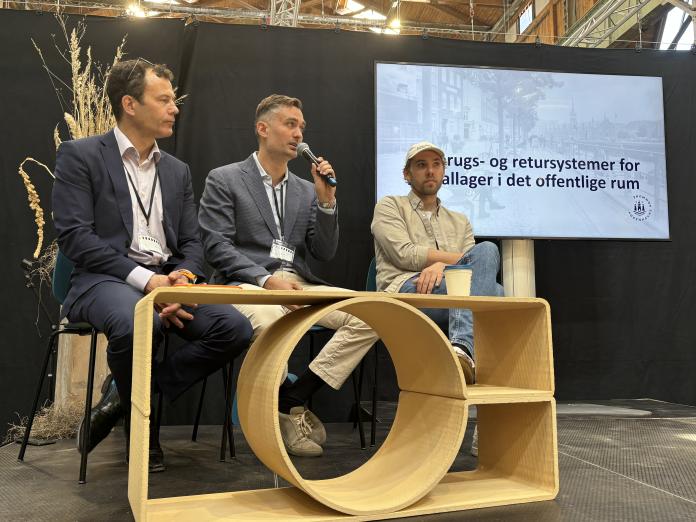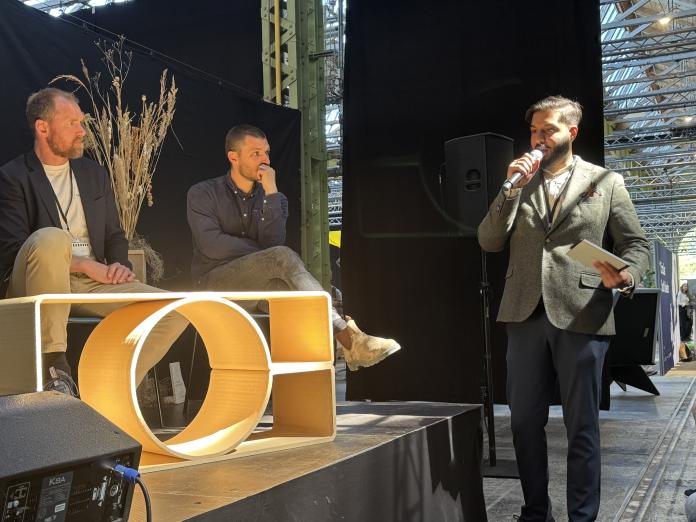LOOP 2025: Reuse- & return systems for packaging in public spaces

A call for national collaboration
A general consensus between all the participants at the debate was that the market does not drive itself, and the transition to reusable packaging systems requires coordinated action.
There is a clear need for development that goes beyond municipal boundaries and points toward a unified, national approach. To build a coherent and effective system, involvement from national authorities is crucial.
At the same time, close collaboration with industry and trade organizations is essential to ensure that the right frameworks and incentives are in place to support innovation and long-term adoption.
Aarhus leads the way
Since 2024, the City of Aarhus has been running a three-year pilot project in collaboration with TOMRA Systems A/S, testing a reuse and return system for cups in public spaces. The initiative responds to data showing that 500 million single-use packaging items are consumed annually in Denmark — a significant portion of which ends up as litter in Aarhus, where packaging waste is among the most problematic types.
The project has shown promising results. As of April 27, 2025, a total of 892.955 cups have been returned via TOMRA’s deposit machines, with a return rate of 86%. This equates to the volume of roughly 9,000 full garbage bins. Public usage has increased by 350% over the past year, now reaching a 11.7% market share.
User feedback has been overwhelmingly positive, with many finding the system smart and easy to use. A key factor driving adoption is whether baristas ask customers about using a reusable cup. Cafés still offering both single-use and reusable options often default to the former, as it is cheaper and faster. However, partners who have switched entirely to reusables report no customer dissatisfaction.
Collaboration between the City of Aarhus and Tomra System A/S
Copenhagen takes the next step
The City of Copenhagen is moving forward with its ambitions for reusable packaging. A new public tender has just been released for a return system in the Inner City, and an innovation fund is set to open this autumn to support new solutions. Momentum is clearly building — but challenges remain. Competing with the convenience and low cost of single-use packaging continues to be a major hurdle for reuse systems.

Steering the market toward change
In a panel discussion, different actors tackled the question: What will it take to accelerate progress and speed up the transition to reusable packaging systems?
A call for national leadership
TOMRA and New Loop highlighted that municipal limitations hinder progress. While Aarhus has demonstrated local success, replication across cities is difficult without national support. “Why should each city invent its own system when one already works?” asked a TOMRA representative. New Loop pointed to the example of Denmark’s plastic bag fee, which reduced consumption by two-thirds, as proof that clear policy can change behavior.
Incentives
The City of Aarhus emphasized the need for structural incentives, as cities have a vested interest in reducing street waste but cannot carry the burden alone. They advocate for local regulatory pilots to demonstrate municipal commitment, while urging that reusable systems must be interoperable across cities, like the national deposit system.
Funding
Multiple speakers noted that reusable systems are inherently more complex and expensive than disposables: they require collection, washing, logistics, and labor. New Loop stressed the need for more public investment and innovation funding, especially at the municipal level. HORESTA added that narrowing the cost gap between single-use and reusable packaging is key.
The role of standardization
The need for national standardization came up repeatedly. The City of Copenhagen and Aarhus emphasized that scaling up requires packaging that can work seamlessly across systems. Without this, fragmentation and user confusion risk derailing adoption. New Loop, already working with TOMRA-compatible cups, pointed to Germany, where lack of intuitive design leads to loss of users.